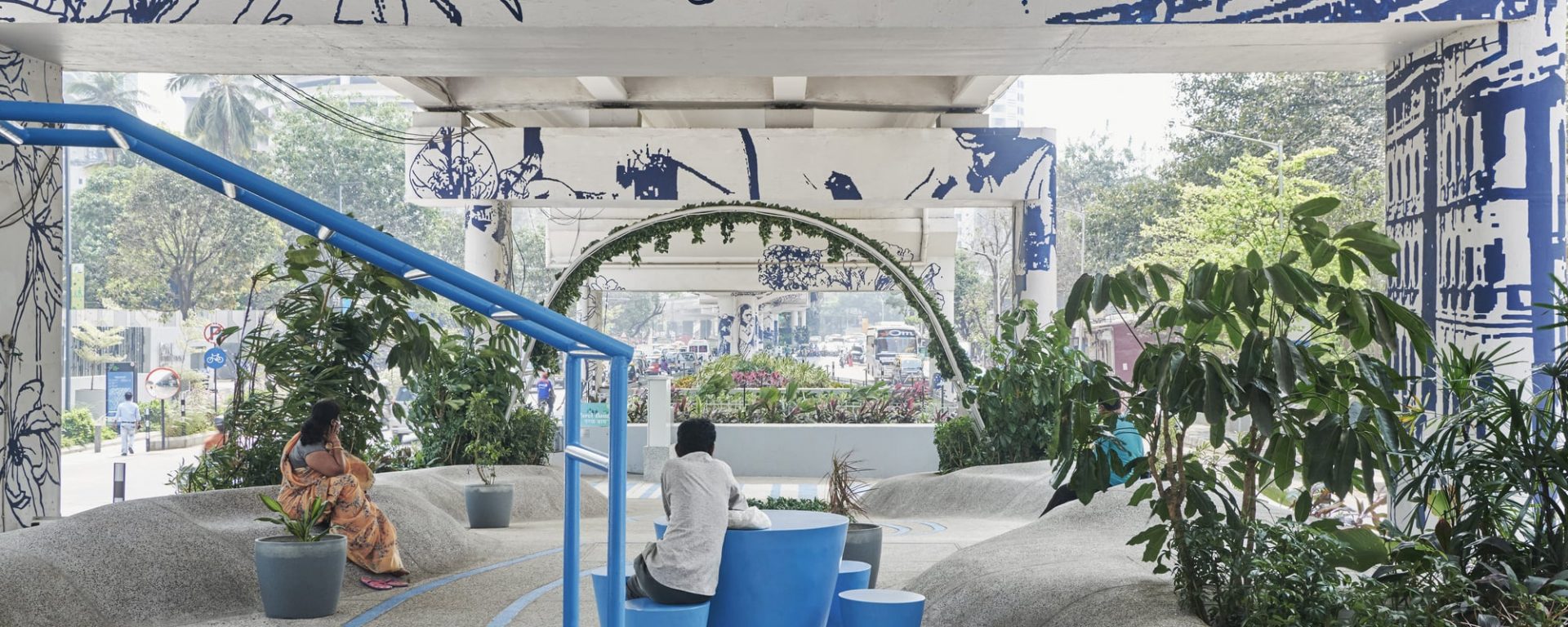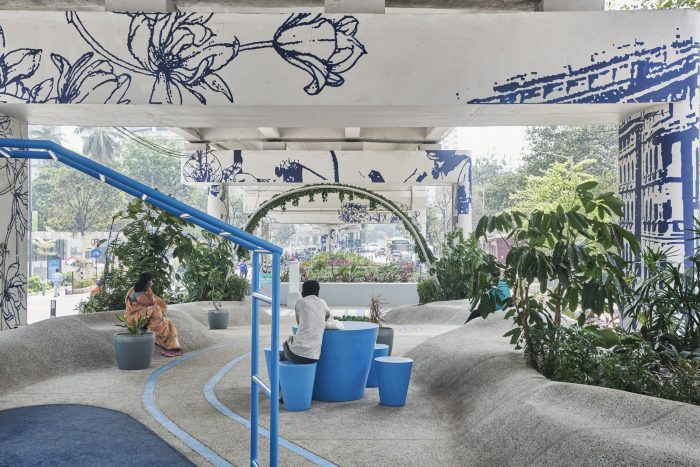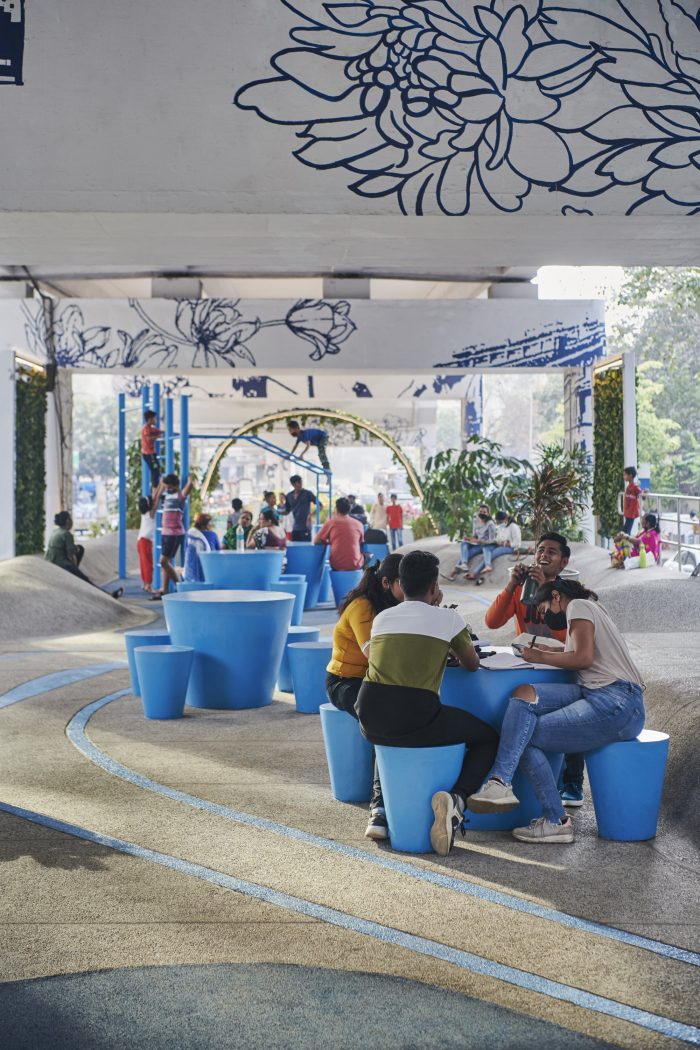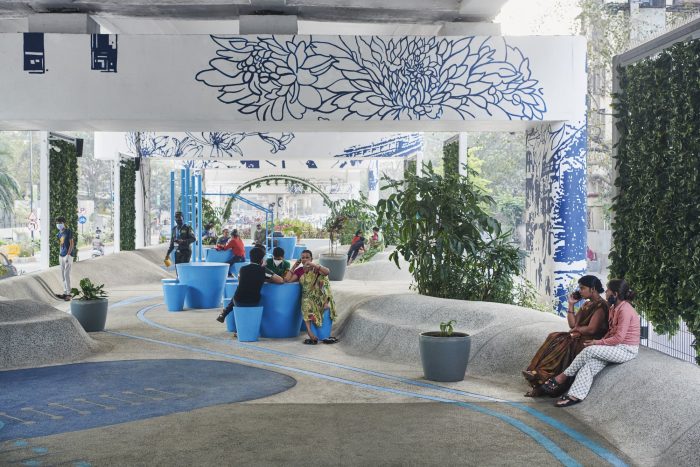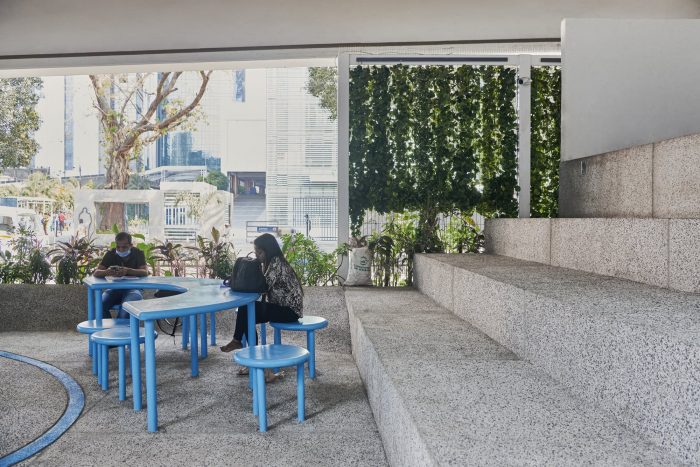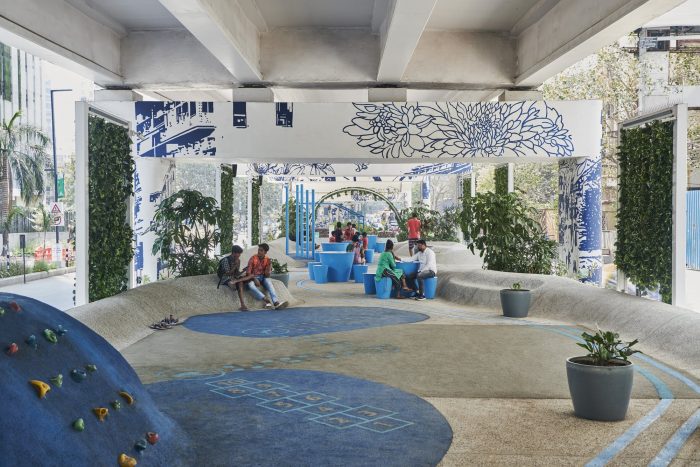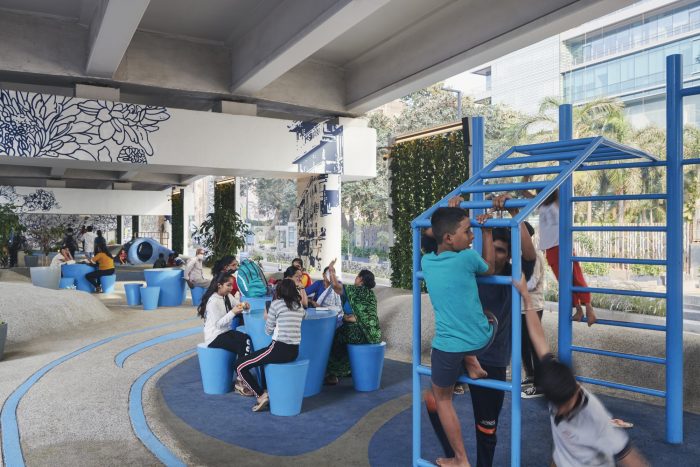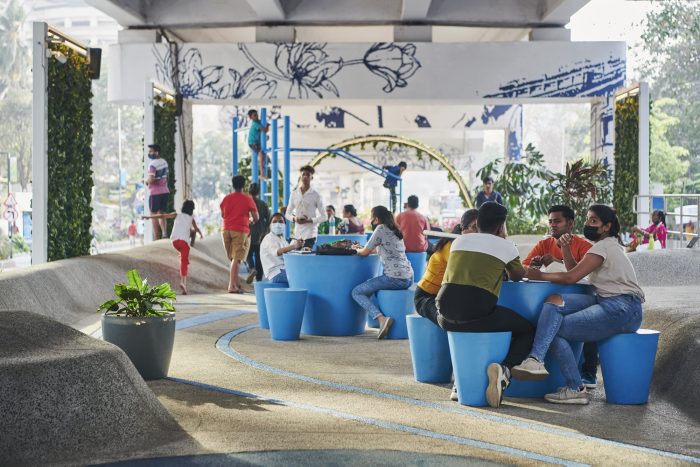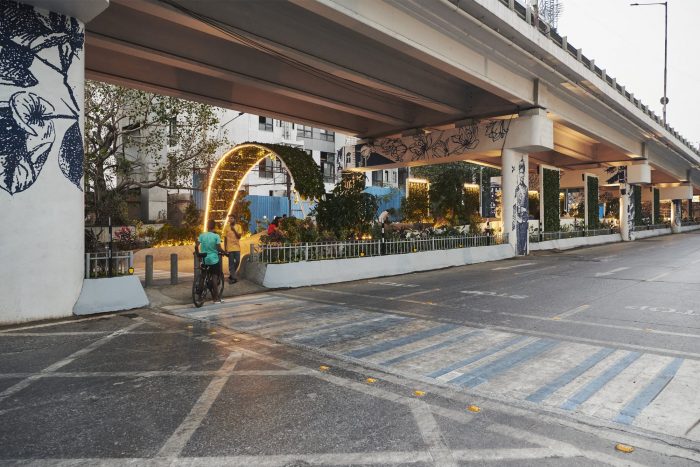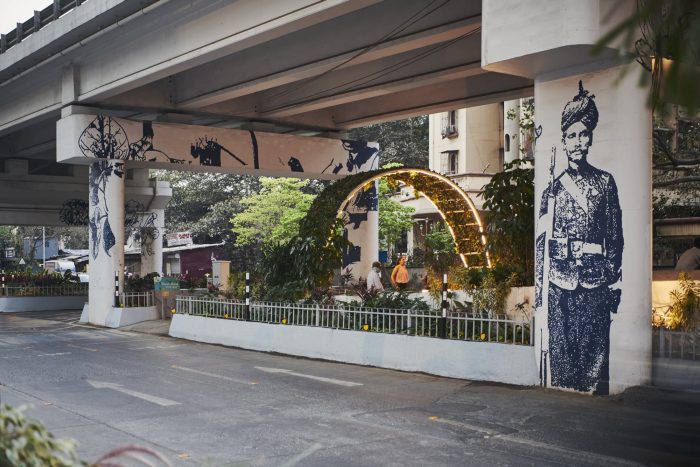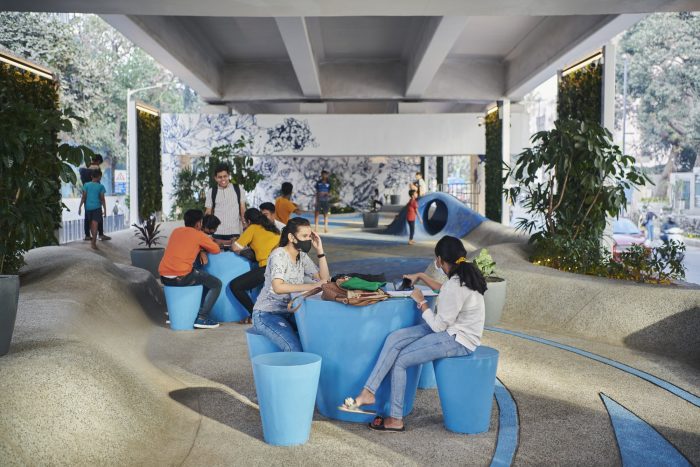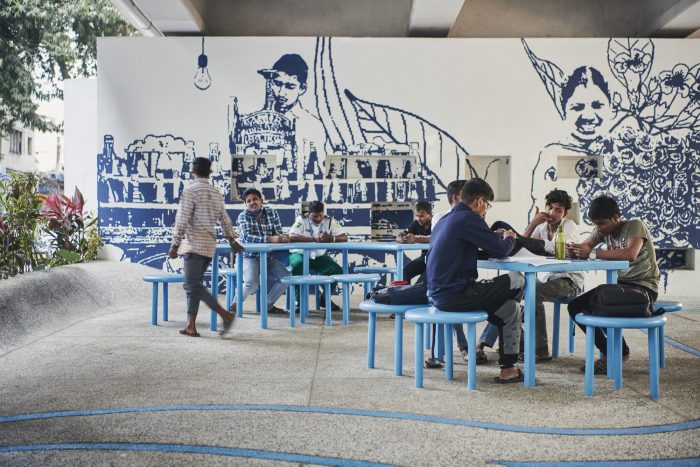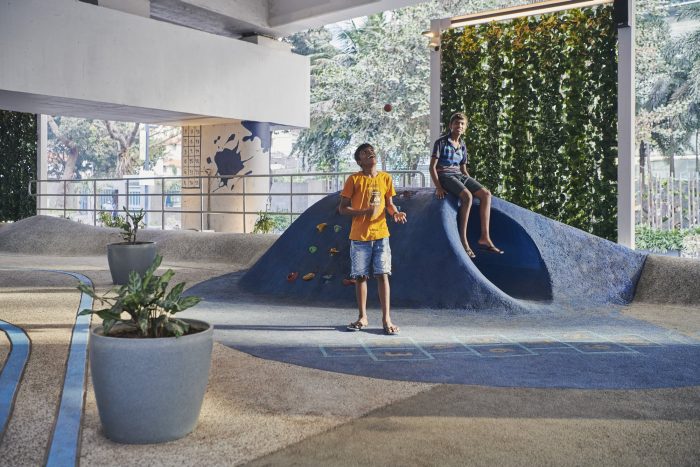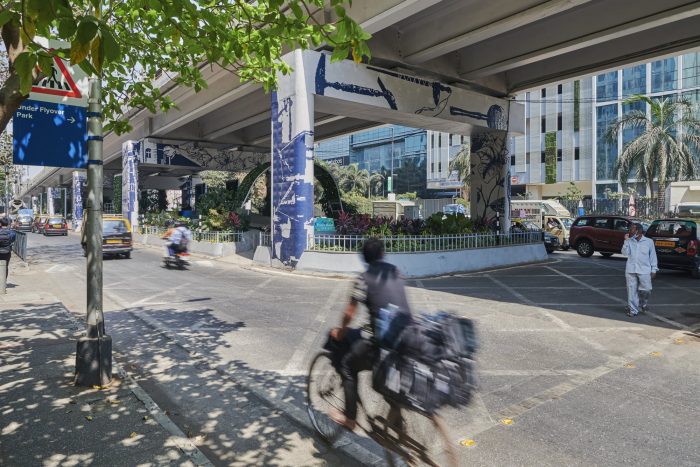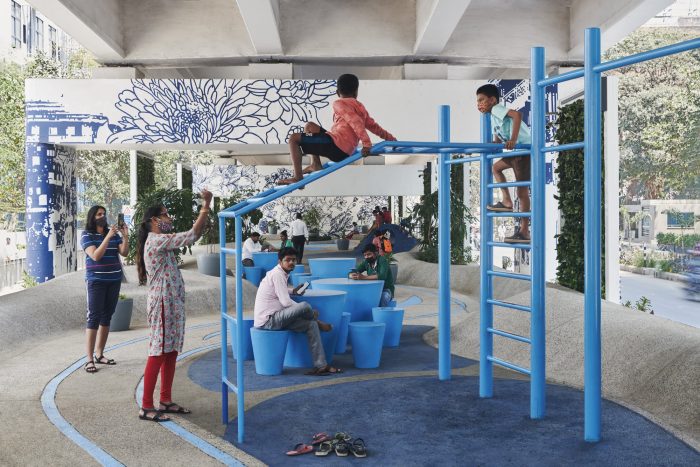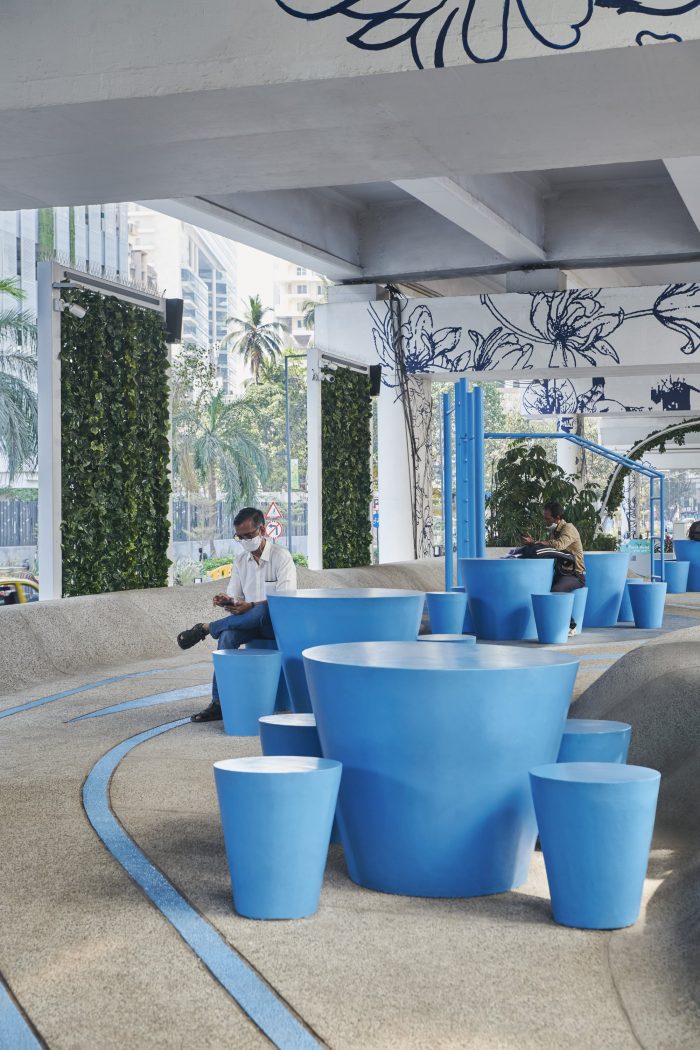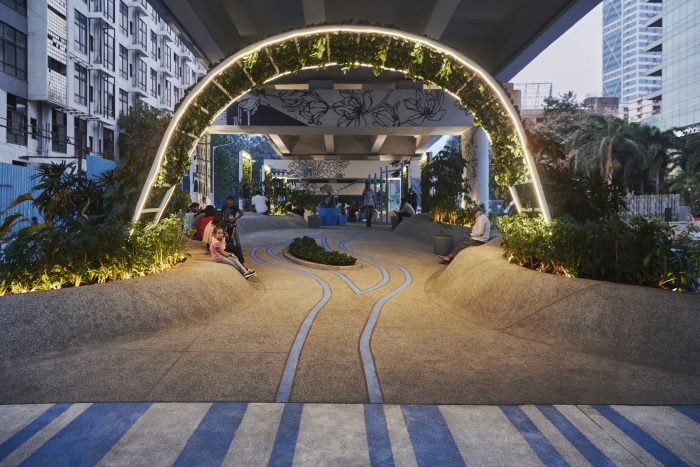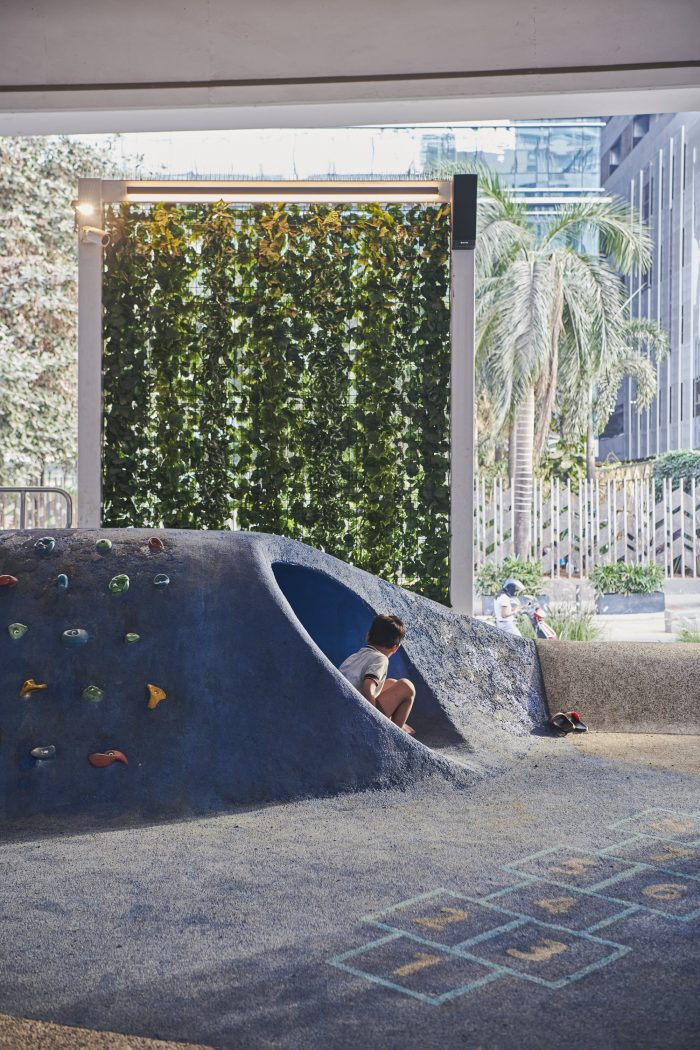MVRDV与联合建筑师StudioPOD合作,已经完成了One Green Mile的建设,改造了孟买Senapati Bapat Marg天桥下一系列被忽视的空间。该设计将混凝土基础设施的一个霸道的元素变成了整个当地社区的公共空间,增加了急需的设施和绿化,改善了流动性,并为该地区创造了强烈的视觉识别。在更广泛的范围内,该设计为可持续的城市发展提供了一种可重复的方法,为紧张的印度大都市中未被充分利用的公共空间树立了新的基准。
MVRDV, working alongside co-architects StudioPOD, has completed construction of One Green Mile, transforming a series of neglected spaces below Mumbai’s Senapati Bapat Marg flyover. Turning an overbearing element of concrete infrastructure into a public space for the entire local community, the design adds much-needed amenities and greenery, improves mobility, and creates a strong visual identity for the area. On a broader scale, the design offers a repeatable approach to sustainable urban development that asserts a new benchmark for underused public spaces in the intense Indian metropolis.
Senapati Bapat Marg天桥是一系列主要道路的一部分,这些道路在孟买市中心延伸超过11公里,产生了严重的噪音污染,并在邻近地区之间形成了障碍,限制了人们的出行选择。当地建筑公司StudioPOD受Nucleus Office Parks委托,为该地区的一个办公室开发项目改善天桥旁800米长的街景。对于这个方案中最具变革性的部分,在天桥结构本身下面的一个未使用的空间,他们邀请MVRDV合作开发一个社区空间,以解决天桥的负面影响,同时回应该地区缺乏绿化和物理设施的问题。
The Senapati Bapat Marg flyover is part of a series of major roads that extend for over 11 kilometres through the heart of Mumbai, generating significant noise pollution and creating a barrier between neighbouring areas that limits options for mobility. In connection with an office development in the area, local architecture firm StudioPOD was tasked by Nucleus Office Parks to improve an 800-metre stretch of streetscape running alongside the flyover. For the most transformative part of this scheme, in an unused space beneath the flyover structure itself, they invited MVRDV to collaborate on a community space that would address the flyover’s negative impact while responding to the area’s lack of greenery and physical amenities.
StudioPOD最初解决了交通和街道概况问题,并帮助确定方案和确定目标群体。在此基础上,MVRDV设计了蜿蜒的蓝色条纹,创造了一个凝聚的视觉形象,用于空间的所有元素,为One Green Mile创造了一个概念,提供了一个令人愉悦的整体城市空间体验。
StudioPOD initially solved the traffic and street profiles and helped to define the programme and identify the target groups. Expanding upon this, MVRDV designed sinuous blue stripes to create a cohesive visual identity used across all elements of the space, creating a concept for One Green Mile that offers a delightful and holistic urban spatial experience.
丘陵铺装的景观将二维的视觉特征转化为三维的空间体验,容纳了一整套不同的方案,并提供了一个动态的物理吸引力。材料和图形中的视觉重点色彩使干预措施的所有方面都可以作为一个整体来识别。该空间被划分为一系列具有不同功能的公共 “房间”:休息室、健身房、遮阳座椅区、表演空间和阅览室。种植植物延伸到整个空间。设计中的绿色植物–以空间内的一系列屏幕、入口处的拱门以及挡土墙和种植槽为特色–促进了生物多样性,同时为周围空间降温并抑制了噪音污染。
A hilly paved landscape transforms the 2-dimensional visual features into a 3D spatial experience, accommodating a whole range of different programmes and providing a dynamic physical attraction. Visual accent colours in materials and graphics make all aspects of the intervention recognizable as a whole. The space is divided into a series of public “rooms” with diverse functions: lounge, gym, shaded seating area, performance space, and reading room. Planting extends throughout the space. Greenery in the design – featured on a series of screens lining the space, an archway at the entrance, and in retaining walls and planters – promotes biodiversity, while cooling the surrounding spaces and dampening noise pollution.
MVRDV合伙人Stefan de Koning说:”也许有一天,我们会看到嘈杂的、令人不快的高速公路将我们的城市分割开来的结局,但现在它们仍然不幸是一种必要的邪恶–你在孟买比大多数城市更能看到这种邪恶”。”绿色一英里 “提出了一个问题:如果我们期望高速公路能给它们所经过的地方带来一些回报,会怎么样?天桥可以在炎热的城市中提供一些阴凉,并创造出一小块无法开发高楼的土地。把它变成一个公共空间并不是一个疯狂的想法”。
“Perhaps one day we will see the end of noisy, unpleasant highways carving up our cities, but for now they are still unfortunately a necessary evil – one you can see in Mumbai more than most cities”, says MVRDV partner Stefan de Koning. “One Green Mile asks the question: what if we expected highways to give something back to the places they cut through? A flyover can provide some shade in a hot city, and creates a small area of land that can’t be developed with tall buildings. It’s not such a crazy idea to make that into a public space.”
该设计加强了行人和骑自行车者的连接,使该地区更加舒适和方便。铺路、自行车道和明亮的大型斑马线促进了通道和安全。它通过纳入一个不间断的移动网络和移动中心来刺激自行车运动,改善了可及性。该地区的照明概念与程序性元素和城市家具特征一起工作,使其成为一个可识别的地方,并确保全天候的安全。
The design enhances connections for pedestrians and cyclists to make the area more comfortable and accessible. Paving, bicycle paths, and bright, large-scale zebra crossings promote access and safety. It improves accessibility with the incorporation of an uninterrupted mobility network and mobility hub to stimulate cycling. The area’s lighting concept works alongside programmatic elements and urban furniture features to make a recognisable place, and ensure safety around the clock.
该项目体现了循环经济的方法;通过利用下面的空间,天桥本身的价值也在增加;除了运输汽车,它还获得了一个新的用途,成为一个有遮蔽的、被占用的公共空间。工程特点是储存和过滤季风水,以灌溉One Green Mile的广泛植物网络。凭借其对遮蔽性和包容性的绿色公共空间的关注,”绿色一英里 “可以很容易地在城市的其他地方复制。就目前的项目而言,计划中的未来延伸将把公共空间的振兴扩大到天桥总长11.22公里的3公里,从孟买的Mahalaxmi赛马场延伸到Dharavi红树林地区。
The project exemplifies a circular economy approach; by utilizing the space underneath, the flyover itself increases in value; in addition to transporting cars, it acquires a new purpose as a sheltered, occupied public space. Engineering features store and filter monsoon water to irrigate One Green Mile’s extensive network of plants. With its focus on shaded and inclusive green public spaces, One Green Mile can easily be repeated elsewhere in the city. For the current project, a planned future extension will expand the revitalisation of public space to 3 kilometres of the flyover’s 11.22- kilometre total stretch, which extends from Mumbai’s Mahalaxmi racecourse to the Dharavi Mangrove Region.
Architects: MVRDV
Year : 2022
Photographs :Suleiman Merchant
Co Architects : StudioPOD
City : Mumbai
Country : India

